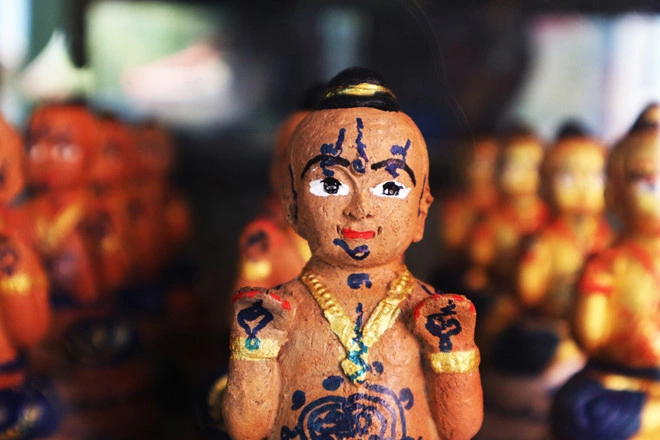Shocking Kuman Thong Case in Thailand: Unraveling the Mystery Behind an Ancient Tradition

In a startling development that has gripped Thailand, authorities announced a major breakthrough in an investigation related to the Kuman Thong tradition on August 5, 2025, at approximately 3:24 PM local time. The case, which has sparked widespread discussion across the nation, involves the discovery of a significant number of ritual items tied to this ancient Thai spiritual practice. The revelation has not only captivated the public but also raised questions about the intersection of tradition, belief, and modern law.
Kuman Thong, often translated as “Golden Child,” is a deeply rooted element of Thai folklore, originating from the epic tale Khun Chang Khun Phaen. Historically, these amulets are believed to house protective spirits, often created through sacred rituals to bring good fortune, prosperity, or protection to their owners. Traditionally crafted from materials like wood, metal, or sacred herbs, Kuman Thong amulets are revered by many in Thailand, who treat them with offerings and respect, viewing them as spiritual guardians.

The recent case, however, has cast a shadow over this cultural practice. According to Thai authorities, a large-scale investigation uncovered a hidden operation involving the creation and distribution of Kuman Thong-related items. While details remain limited to avoid speculation, officials revealed that the operation involved an extensive network, prompting a deeper look into how traditional practices are being interpreted in modern times. The discovery has sparked a mix of curiosity and concern among Thai citizens, many of whom hold Kuman Thong in high regard as part of their cultural heritage.
Adding to the intrigue, reports have surfaced linking a high-profile individual to the case, though authorities have not officially confirmed these claims. Speculation has swirled online, with some sources pointing to a figure connected to the entertainment industry. However, without verified information, the public is urged to approach such rumors cautiously to avoid misinformation. The case has already ignited debates on social media platforms, with users expressing a range of emotions—from shock at the scale of the findings to calls for greater understanding of the cultural context surrounding Kuman Thong.
For many Thais, Kuman Thong is more than just an amulet; it is a symbol of faith and tradition. Devotees often maintain small altars for their Kuman Thong, offering food, drinks, or toys to honor the spirit believed to reside within. These practices are passed down through generations, blending animist beliefs with Buddhist traditions. However, the commercialization of such sacred items has long been a point of contention, with critics arguing that it risks diluting the spiritual significance and opening the door to unethical practices.

The ongoing investigation has prompted authorities to emphasize the importance of regulating the creation and sale of spiritual artifacts. Thai law strictly governs practices involving sacred or culturally significant items, and officials have vowed to crack down on any activities that exploit these traditions for profit or illicit purposes. Community leaders and spiritual practitioners have also weighed in, calling for respect toward the cultural roots of Kuman Thong while urging the public to avoid sensationalizing the case.
As the story unfolds, it serves as a reminder of the delicate balance between preserving cultural heritage and addressing modern challenges. The Kuman Thong case has sparked a broader conversation about how ancient traditions are practiced in today’s world, particularly in the face of globalization and commercialization. For now, the public awaits further updates from authorities, who have promised transparency as they continue their investigation.

This case also highlights the power of social media in shaping public perception. Platforms like Facebook and X have been abuzz with discussions, with users sharing their thoughts on the cultural and ethical implications of the findings. As the story develops, it is crucial for readers to rely on verified information from credible sources to avoid spreading rumors or misinformation.
The Kuman Thong case, while shocking, offers an opportunity for reflection on Thailand’s rich cultural tapestry. It underscores the need to approach sacred traditions with respect and understanding, ensuring they are preserved in a way that honors their historical and spiritual significance. Stay tuned for updates as authorities continue to unravel the complexities of this intriguing case.





